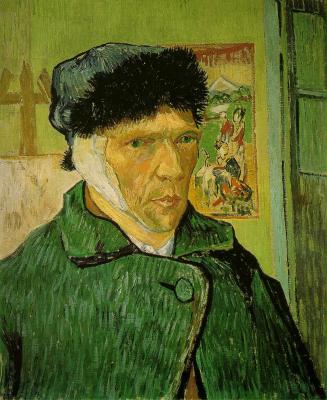New Book reveals that Vincent van Gogh was accidentally killed by a friend
Authors Steven Naifeh and Gregory White Smith have spent the last ten years to prove that Van Gogh was shot accidentally by two teenage boys that he knew and drank with. One dressed as a cowboy possessed “a malfunctioning gun”.The painter died in Auvers-sur-Oise, France, in 1890 aged 37. They researched thousands of previously untranslated letters written by the artist which were among documents held in a database containing 28,000 notes.Van Gogh had been living at the Auberge Ravoux inn. He painted in the local wheat fields and work from this period, which included his final painting of crows circling a desolate field are highly regarded. It has been speculated that Vincent shot himself in the field before returning to the inn where he died. The author Steven Naifeh stated in an interview, it was “very clear to us that he did not go into the wheat fields with the intention of shooting himself”. “The accepted understanding of what happened in Auvers among the people who knew him was that he was killed accidentally by a couple of boys and he decide to protect them by accepting the blame.” Van Gogh: The Life consists of 900-plus well-written pages of intensely researched biographical detail about an artist who, in 10 prolific years, introduced an expressionistic style of painting that changed art forever. In a short chapter at the end of the book, the authors start to make their case that Vincent van Gogh was shot by a 16-year old boy called Rene Secretan, who had a history of tormenting the troubled artist. On why he would cover for a boy he loathed, the authors reasoned, “because Vincent welcomed death” and didn’t want to drag the brothers “into the glare of public enquiry… for having done him this favour”. It is thought that Van Gogh’s acceptance of death was “really done as an act of love to his brother, to whom he felt a burden”. Theo, was funding the artist who, at that time had sold only one of his works. It is known that van Gogh had suffered from depression an illness that saw him committed to an asylum. Van Gogh’s family had tried to commit him to a mental asylum long before his voluntary confinement later in life.
Vincent Willem van Gogh was born March 30, 1853 and died July 29, 1890 he was a Dutch post-Impressionist painter whose work, notable for its thickly painted impasto evoked an emotional honesty, and bold color which had a far-reaching influence on 20th-century art. After years of painful anxiety and frequent bouts of mental illness, he died at the age of 37 from a gunshot wound. His work was then known to only a handful of people and appreciated by fewer still. Van Gogh loved art from an early age. He began to draw as a child, and he continued making drawings throughout the years leading to his decision to become an artist. He did not begin painting until his late twenties, completing many of his best-known works during his last two years. In just over a decade, he produced more than 2,000 artworks, consisting of around 900 paintings and 1,100 drawings and sketches. His work included self portraits, landscapes, still lifes of flowers, portraits and paintings of cypresses, wheat fields and sunflowers. He spent his early adulthood working for a firm of art dealers, traveling between The Hague, London and Paris, after which he taught for a time in England. One of his early aspirations was to become a pastor and from 1879 he worked as a missionary in a mining region in Belgium where he began to sketch people from the local community. In 1885, he painted his first major work The Potato Eaters. His palette at the time consisted mainly of somber earth tones and showed no sign of the vivid coloration that distinguished his later work. In March 1886, he moved to Paris and discovered the French Impressionists. Later he moved to the south of France and was taken by the strong sunlight he found there. His work grew brighter in color, and he developed the unique and highly recognizable style that became fully realized during his stay in Arles in 1888. The extent to which his mental health affected his painting has been a subject of speculation since his death. Despite a widespread tendency to romanticize his ill health, modern critics see an artist deeply frustrated by the inactivity and incoherence brought about by his bouts of illness. According to art critic Robert Hughes, van Gogh’s late works show an artist at the height of his ability, completely in control and “longing for concision and grace”.

